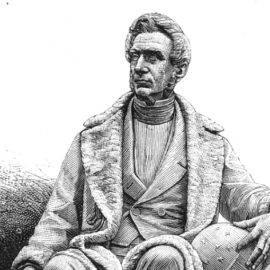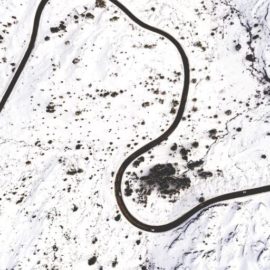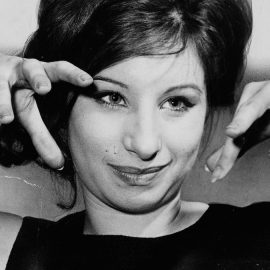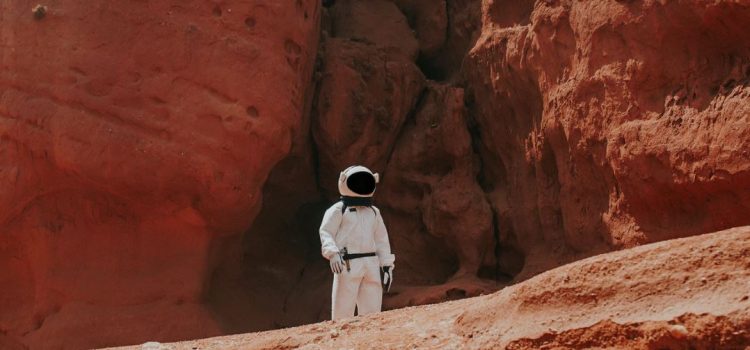
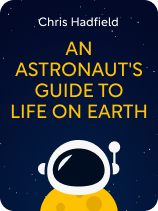
This article is an excerpt from the Shortform book guide to "An Astronaut's Guide to Life on Earth" by Chris Hadfield. Shortform has the world's best summaries and analyses of books you should be reading.
Like this article? Sign up for a free trial here.
How did Chris Hadfield become an astronaut? What does it take to become an astronaut?
Retired astronaut Chris Hadfield had a rich career that spanned 21 years. In An Astronaut’s Guide to Life on Earth, he looks back on his early days at the Canadian Space Agency and how he trained to go to space.
Keep reading to learn about Chris Hadfield’s early career.
Hadfield’s Journey to Becoming an Astronaut
How did Chris Hadfield become an astronaut? Hadfield can pinpoint the exact moment he decided he wanted to be an astronaut. It was 1969, he was nine years old. He and his family were crowded around the TV, watching Neil Armstrong take his first steps on the Moon. Hadfield wanted a life like Armstrong’s—a life of exploring space and contributing to scientific knowledge.
(Shortform note: The 1969 Apollo 11 mission and moon landing, led by Armstrong, inspired many children to become space scientists and engineers. According to a recent survey, over a quarter of US adults claim that when they were children, they aspired to become astronauts. However, fewer children today share this aspiration: Another recent survey reveals that more of today’s children in the US and UK aspire to become YouTube stars than astronauts—around 30% dream of careers as Youtubers, compared to the 10-11% who want to be astronauts.)
During his childhood, Hadfield worried that his dream to become an astronaut was unattainable: He lived in Canada, and Canada didn’t have a space agency at the time. The US space agency, NASA, only hired Americans.
(Shortform note: Although Canada lagged behind the US in establishing a federal space agency—which they eventually did in 1989—Canadians still contributed to space activities prior to this. For instance, in 1969, the Canadian government joined NASA’s Space Shuttle program. This led to the development of the Canadarm, a robotic arm used in many space missions, including Hadfield’s first space flight.)
Despite the unfortunate reality that his chances of becoming an astronaut were slim, Hadfield decided he’d still take steps that aligned with his goal to become an astronaut. That way, he’d be ready if an opportunity arose. He worked hard in school, studied airplanes in his free time, and eventually earned a pilot’s license.
(Shortform note: Why did Hadfield focus on learning about and flying airplanes in preparation for becoming an astronaut? He may have chosen this focus because military pilots’ skills in flying airplanes transfer well to flying spacecraft. Additionally, military pilots are experienced in operating in and surviving extreme environments—necessary skills for astronauts.)
From Test Pilot to Astronaut
After graduating from high school in 1977, Hadfield enrolled in military college and majored in mechanical engineering, a common major for aspiring astronauts. After marrying his high school sweetheart, he began training to fly fighter jets with the Canadian Forces. He soon realized that he wanted to be a test pilot—at least until he could become an astronaut. He, his wife, and their three children moved to a US Air Force base where he attended and eventually graduated from test pilot school.
(Shortform note: While Hadfield’s plan to become a military test pilot might not seem immediately relevant to his goal of becoming an astronaut, NASA has historically recruited a large number of test pilots as astronauts. For instance, in 1958, NASA hired seven astronauts—all military test pilots—for Project Mercury, their first human spaceflight program. The NASA hiring team reasoned that military test pilots were accustomed to the intensity of high-speed flight and remaining calm in stressful situations—two skills essential for astronauts. In The Right Stuff, journalist Tom Wolfe says that these astronauts also had “the right stuff”—both the courage to put their lives on the line and the skills to stay alive in dangerous situations.)
When Canada finally started its Canadian Space Agency (CSA), Hadfield set his sights on applying to be an astronaut. He continued working as a test pilot, and he spent his evenings and weekends completing a master’s degree in aviation systems so he’d be more qualified to serve as an astronaut.
(Shortform note: A master’s in aviation systems is one of many options for NASA’s requirement that astronaut applicants hold a master’s degree. Other options include a master’s degree in most science, technology, engineering, and mathematics subfields.)Not long after completing his degree, Hadfield applied to the CSA and progressed through countless rounds of intensive interviews and tests. Then, one day in 1992, Hadfield got the call he’d been looking forward to since age nine: He was selected from among over 5,000 applicants to be an astronaut for the CSA.
| The Selectivity of the American and Canadian Astronaut Corps The CSA’s Astronaut Corps continues to be extremely selective. In 1992, the year Hadfield became an astronaut, the CSA only accepted four applicants—an acceptance rate of 0.0008%. For other recruitment seasons, the CSA’s acceptance rate hovered close to 0.0005%, matching the average acceptance rate of NASA’s Astronaut Corps. While Hadfield doesn’t explicitly describe what factors make an applicant more likely to be accepted, retired NASA astronaut Leland Melvin explores this topic in his memoir, Chasing Space. Melvin identifies two factors that bolster an applicant’s chances of becoming an astronaut. A growth mindset: Melvin argues that astronauts have what psychologist Carol Dweck calls a growth mindset—the belief that you can develop your abilities through hard work. Because astronauts have to learn so many new skills throughout their careers, applicants with a growth mindset show they’re likely to succeed. A supportive community: According to Melvin, you’re more likely to become an astronaut if you have a supportive community of people encouraging and inspiring you. Melvin claims that his family provided him with a nurturing environment and encouraged him to pursue his interest in engineering. He also claims that, as a Black astronaut, he was inspired by Black role models whose courage created opportunities for future Black scientists and astronauts. For example, Melvin was inspired by Black pilot Chauncey Spencer, whose accomplishments compelled then-Senator Harry S. Truman to secure public funds for training Black airmen. |

———End of Preview———
Like what you just read? Read the rest of the world's best book summary and analysis of Chris Hadfield's "An Astronaut's Guide to Life on Earth" at Shortform.
Here's what you'll find in our full An Astronaut's Guide to Life on Earth summary:
- Chris Hadfield's experience of becoming an astronaut
- The five life lessons Hadfield learned in his role as an astronaut
- Why you should find joy in everyday life rather than looking forward to milestones

